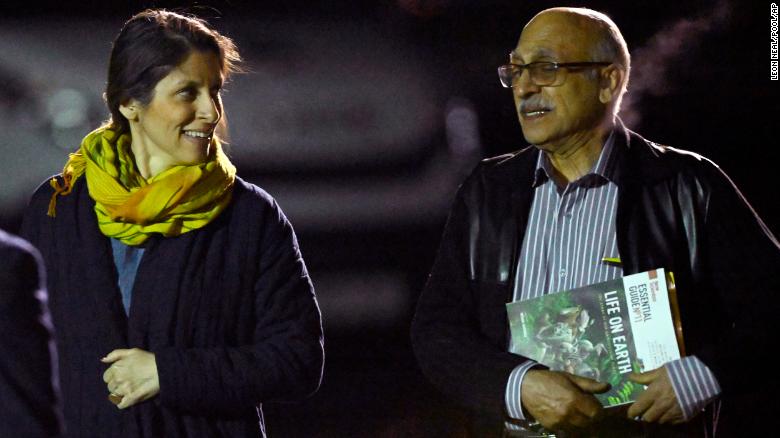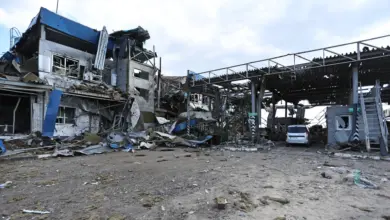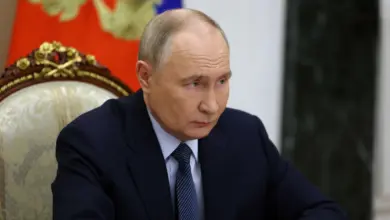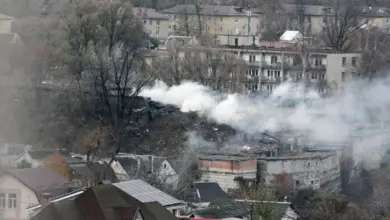
Abu Dhabi, UAE (CNN) – Just days after her release from detention in Iran, Nazanin Zaghari-Ratcliffe took to the microphones to remind the world that the end of her almost six-year ordeal shouldn’t be marked as a mission accomplished.
“I believe that the meaning of freedom is never going to be complete as to such time that all of us who are unjustly detained in Iran are reunited with our families,” the British-Iranian national told a press conference in London on Monday, the UK’s PA Media reported.
The release of Zaghari-Ratcliffe and Anousheh Ashouri was touted as a “huge achievement” for British diplomacy by Prime Minister Boris Johnson, having resolved an issue that had been on the national agenda for years.
The release last week took place as world powers, including the United Kingdom, come close to concluding talks to revive the 2015 agreement that placed curbs on Tehran’s nuclear program. The UK paid Iran around $520 million to settle a 40-year-old debt for the release.
It was however the conclusion of just one chapter in a long history of prisoners that have become bargaining chips in the political squabbles between the Islamic Republic and the West.
Western powers have denied any links between the releases and the nuclear talks, but their timing had some opponents of the arrangement referring to the prisoners as “hostages” and the transaction as a “ransom payment.”
Former US Secretary of State Mike Pompeo, who served under the Donald Trump administration that withdrew from the 2015 agreement, slammed the UK’s payment to Iran, calling it “blood money.”
Tehran has repeatedly denied the accusation, saying the arrests were made on charges of “national security” and “espionage.” Iran doesn’t recognize dual citizenship.
Despite the denial of links to the nuclear talks, activity around the arrest and release of dual national Iranians has in the past given an indication of where talks may be headed.
The number of dual nationals arrested by Iran, for example, had spiked by 2015, when the agreement was signed.
In 2016, five American prisoners were freed as the benefits of the? first nuclear deal began to materialize. The release was preceded by one of the largest payments by the US government to Iran in settlement of an old dispute.
As release negotiations were underway, the US discharged $400 million in funds frozen since 1981, which was sent to Iran in cash on a plane, in addition to another $1.3 billion in interest owed to Iran. Then State Department Spokesman John Kirby said it was used as “leverage.”
Not all dual nationals were arrested by Iran for the same reasons, said Trita Parsi.
“Some people that were taken early on in the JCPOA were actually deliberately taken by hardline elements [within Iran] who wanted to make sure that the potential for the JCPOA to translate into a bigger warmup in relations between the US and Iran would not happen,” he said, referring to the Joint Comprehensive Plan of Action, as the 2015 agreement is known.
The US has also made its own arrests of Iranians over the years, a point former Iranian foreign minister Javad Zarif had repeatedly highlighted while in office.
The release of prisoners from one side, however, is usually accompanied by some form of exchange, be it a prisoner swap or a settlement of old disputes, said Parsi, adding that Iranian prisoners in Western countries are usually those who violated sanctions against the Islamic Republic.
“The Iranians consider these [imprisonments] to be illegitimate and deem that as essentially hostage-taking by the West,” he said.
More arrests followed the 2016 releases, including that of US citizen Baquer Namazi, who flew to Tehran to help free his son Siamak Namazi, also a US citizen.
In a February press release, the US State Department marked six years since Namazi’s arrest, saying that he is being as a “political pawn” by Iran, along with other detained foreign nationals.
Jason Razaian, a former Tehran bureau chief for the Washington Post who was among the prisoners freed in 2016, said the issue of prisoners needs to be forced to the front of the agenda in talks with Iran “so that you’re not risking the lives of innocent people.”
“I understood that very well when I was sitting [in an Iranian prison) that that wasn’t going to happen; I was never going to be the number one priority,” he told CNN. “Let’s turn it around; let’s make it the number one priority.”
Parsi said plans for more releases may be underway.
The following are Americans held in Iran who are likely to come up in negotiations between the Biden administration and the Islamic Republic as nuclear talks progress:
Emad Shargi: The Iranian American businessman was first arrested in 2018 while working for a technology investment company. Shargi spent eight months in jail and was released on bail but has a travel ban. In November 2020, he was sentenced to 10 years in jail by a Revolutionary Court for espionage charges. His family says he’s innocent.
Siamak and Baquer Namazi: Siamak Namazi was arrested and detained in October 2015 and a year later was convicted of “collusion with an enemy state” — the United States — and sentenced to 10 years in prison. His elderly father, Baquer, was arrested and detained in February 2016 after being lured to Iran under the false premise that he would be able to see his son. Baquer was released from prison in 2018 on medical grounds, be he is banned from traveling. Their family says they are innocent.
Morad Tahbaz: An Iranian American environmentalist who also holds British nationality, Tahbaz was arrested in 2018, and in 2019 was sentenced to 10 years in prison on charges of “spying” and “collusion against Iran’s national security.” He was released from prison last week and later taken back to prison to fit an ankle tag. His family has denied the charges against him.
Robert Levinson: A former FBI agent who disappeared in Iran more than a decade ago, Levinson became the longest held US citizen in history in 2016. Levinson traveled to Kish Island, Iran, in early March 2007, according to State Department officials, and was never publicly seen or heard from again. His family believes he is dead.
Additional reporting by Adam Pourahmadi, CNN




